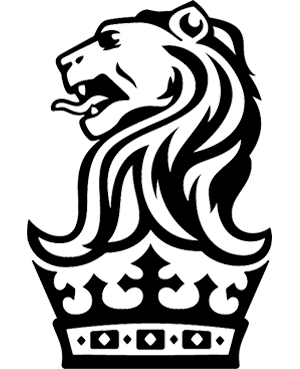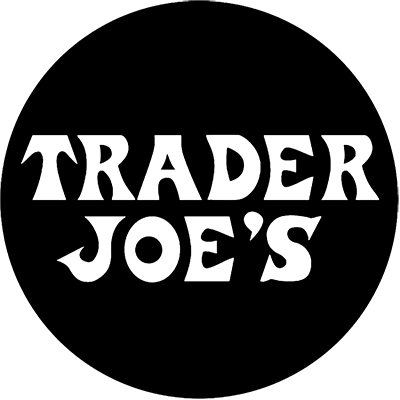Culture
Leadership
How will you inspire your team? See the choices leaders make in order to strengthen and align their brand's culture.
Constantly share what you have learned
Every Sunday night, co-founder Brian Chesky emails all Airbnb staff about something he has learned, something on his mind, or a principle he wants to convey. He describes this Sunday Night Series as "not really a tactical email, but a more above the trees, thought-provoking, cultural email." Topics range from the advice he learned about elite recruiting from a leading Sports Agent to a three-part series on 'How to learn.'
Be involved in the details
Some companies have leaders who can lead people but are not very technical in their team's field. At Airbnb, leaders are not only experts in their field but are required to be fully involved in every detail of a project. This expectation includes CEO Brian Chesky, who reviews every company project weekly, bi-weekly, every four weeks, or eight weeks.
Brian explains, "People think that a great leader's job is to hire people and just empower them to do a good job. Well, how do you know they're doing a good job if you're not in the details?" But being in the details is not about micromanaging. Instead, it is about ensuring alignment and that everyone is "rowing in the same direction."
At first, this caused a lot more work for Airbnb's leaders, but within two years, Brian found himself less busy. Teams became aligned, resulting in fewer meetings, fewer conflicts, and less turnover. Brian explains, "Before, I would get ten surprises, and nine were bad. Now, I get ten surprises, and nine are good. And you don't really have to do anything about good surprises, only bad ones."
Push your people to make their ideas 10x better
CEO Brian Chesky has a saying at Airbnb that when someone proposes a project goal, he says, "Add a zero at the end." The exercise is not to arbitrarily make goals more difficult but instead to force people to reimagine the possibilities of how to make their work 10x bigger, faster, or better.
He explains, "When you push people, they will think about the problem differently. And to think differently about the problem means you have to deeply understand the problem. And to deeply understand the problem, you have to break it into components." As a result, staff begin to start solving problems through first principle thinking where they question every assumption they have about a given problem, then create new groundbreaking solutions from scratch.
Inspire your teams by illustrating the impact they will make
After being told that the Mac load speed was as fast as it could get, Steve Jobs asked his engineers "if it would save a person's life, could you find a way to shave 10 seconds off the [load] time?"
He then went on to illustrate that if five million people were to use the Mac each day, those extra 10 seconds added up to roughly 300 million hours a year. And saving that time would be the equivalent of saving a total of 100 lives each year.
It sounds hyperbolic but by illustrating these challenges through a lens of having a meaningful impact on the world, his team became inspired to rise to the occassion. In psychology this is called The Pymalion Effect, at Apple it was called The Steve Jobs Reality Distortion Field. Whatever you call it, in the end the Mac booted 28 seconds faster.
Don't be afraid to blow it up and start all over
Steve Jobs was always willing to start a project over from scratch, no matter the cost, if it meant advancing the Apple cause. Even when an executive warned him that to make a change would "blow up our own business." Jobs replied, "better we should blow it up than someone else."
- Macintosh: After millions of dollars and thousands of hours were spent developing the Lisa, Steve Jobs all but abandoned the project to build the first personal computer that would have a graphical user interface (GUI).
- iPhone: After the prototype was complete and his engineers said it couldn't be done, Jobs insisted on making the iPhone smaller. He even reportedly, threw it in a fish tank to show that their were air bubbles in it proving there was indeed extra space.
- The Apple Store: During development, the head of retail, realized that the store was all wrong because it focused on the products instead of what people could do with them. Jobs supported the last minute change and offered this insight: "We’ve only got one chance to get it right."
Align your brand around a single cause
In the early 1980s, Chick-fil-A, then a mall-based restaurant, was in trouble. There was an economic recession, mall development stopped due to low engagement, and Chick-fil-A saw its first ever decline in sales. Founder Truett Cathy considered budget cuts and sales contests but shifted gears when he was asked at an executive committee retreat: "Why are we in business?"
Before then, the company's biblical values were never officially codified in one official statement. Leaders spent the rest of the retreat defining what would become Chick-fil-A's just cause. This statement laid the foundation of how the brand will:
- Manage cash and charitable donations
- Attract great franchise owners who will uphold the brand
- Market the business by focusing future growth in communities and away from malls
- Retain and invest in talent
And the results? As former chief marketing officer, Steve Robinson, put it: “There's no way to explain it. The next year, we had a 36% sales increase. And let me assure you the financial crisis and the retail crisis was not over.”
Have a single vision of what leadership means
Around 2000, Chick-fil-A was having a shortage of next generation leaders. Their staff was talented but was not aligned on how to lead. This caused unintended negative consequences for the brand's culture. To fix this, Chick-fil-A set out to align the organization under one single vision of leadership guided by a list of key principles.
Vision: Great leaders serve.
Principles:
- Don't expect others to do what you are unwilling to do. Chick-fil-A leaders have given up their box seats at the Peach Bowl football game, which Chick-fil-A sponsors, to work side-by-side with their staff at the stadium's restaurant.
- Acknowledge that every member of the team is important. Chick-fil-A leaders go and introduce themselves to each employee individually at the home office. They learn staff member names, ask questions, and thank them for their service.
- If there is a line, be the last one on it. Executive privilege and servant leadership do not mix. After company events when all 1,200 staff members are on line to board the bus, the leaders are the last ones on it.
- Share opportunities and privileges with those who might otherwise never have the opportunity. When executives traveled with hourly workers to attend events, they purchased first class seats for their staff while they sat in economy.
- Be inclusive. Leaders foster an abundance mentality showing team members that there are opportunities for everyone. Chick-fil-A executives spend time with all employees across the company to hear new ideas and gain feedback.
Guide by principles, not rules
For years, founder Truett Cathy would remind Chick-fil-A restaurant owners of his rule for staff to say 'My pleasure' to customers. And for years, it never took hold—until he began teaching them the principle behind the phrase, not just the rule itself.
As Truett Cathy explained, customers are the reason staff have paychecks, college scholarships, team outings, and parties, and because of that, it is always a pleasure to serve.
Over the years, Chick-fil-A developed a culture led by guiding principles rather than an exhaustive prescriptive list of behaviors and rules. Leaders would share principles with their staff, give the meaning behind them, and coach them on their understanding. This ultimately empowered staff to take it upon themselves to explore new ways of providing remarkable experiences for guests, like changing tires in the parking lot and dumpster diving for retainers.
Be a positive influence in your employees' lives, inside and outside of work
Acts of generosity and care from Chick-fil-A leaders range between little moments of appreciation to grand gestures of kindness for their staff. It is not uncommon for restaurant owners to:
- Leave personal notes in employee paychecks
- Attend employee softball games and track meets
- Invite employees and their families over for dinner
- Invite spouses to events
- Raise money to buy a car for an employee who is reliant on a taxi to bring her to work
- Personally pay for an employee's orthodontic care
Chick-fil-A, as a company, also provides scholarships to over 7,000 employees which totaled $19 million in 2021.
Demonstrate that every job is important by getting your hands dirty
While it seems obvious that floor level employees clean the bathroom at Chick-fil-A restaurants, owners and executives clean the bathroom just as often. As founder Truett Cathy would say: "When top executives demonstrate that they don't mind doing the dirty jobs, team members understand that every job is important."
Reward employees frequently and publicly
Some Chick-fil-A owners carry around $10 gift certificates in their pocket to reward employees after they say or do something special for a customer. This not only serves as a public example of excellence, but engages employees to try to be the next winner.
Have staff give feedback to their managers
At Google, employees provide feedback to their managers on a semi-annual basis through an anonymous survey called the Upward Feedback Survey. The questions were developed using data from annual surveys and performance evaluations that helped Google define the 10 behaviors that made quality managers.
The aggregated results are shared with the manager and managers are then encouraged to:
- Choose the most important theme and create an action plan on ways to improve
- Discuss the results and action plan with the team
- Follow up with clear commitments to action
The goal of the survey is not to directly impact a manager's performance rating or compensation, but to provide them with valuable developmental feedback.
Have no less than seven direct reports
When it comes to organizational design, Google's rule is to keep it as flat as possible. At Google, there are only four levels of employment: individual contributor, manager, director, and vice president. For a while, Google experimented with having no managers at all but then landed on the guideline that managers should have no less than seven (7) direct reports.
While this is the complete opposite of most servant leadership practices, Google believes that their philosphy:
- Makes it nearly impossible for managers to micro-manage
- Increases employee freedom
- Gives all staff direct access to decision-makers
Share everything at weekly town hall meetings
Attending Google's TGIF weekly company-wide town hall meetings is like "scoring a Willy Wonka golden ticket. [Google] puts it all out there, sharing stuff that in most companies would stay carefully hidden."
After 30 minutes of demos, coming attractions, and screenshots of products under development, employees are encouraged to ask tough questions and voice their disagreement on company strategy and social decisions. Leadership are than held accountable by staff to answer every question honestly and authentically.
How questions are answered during the Q&A
- Questions are submitted on the intranet (or in person) for everyone to see
- Staff vote on the questions that they want answered
- The questions with the highest votes are answered first
- Staff vote on the quality and transparency of the answer with red and green paddles
In the company's first twenty years, with an average 80% attendance rate, Google suffered roughly one major leak each year. Each time, there was an investigation, and whether the leak was deliberate or accidental, that person was fired.
Lead with context, not control
Netflix's structure resembles more of a tree, rather than a pyramid, with management at the foundation setting context and liberating their staff to make decisions on their own. In order to lead with context rather than control, teams are expected to:
- Stay highly aligned. Netflix management's focus is to give employees all the information they need to make informed decisions. That means everyone completely understands the company's vision, strategy, goals, P&L, and main obstacles.
- Stay loosely coupled. Netflix employees are responsible for coming up with problems to solve based on the context managers set. Then employees determine the best solution, set the budget, and approve multi-million dollar contracts without prior approval or buy-in from other teams. If employees aren't trust to make decisions, managers must either set more context or find new employees.
- Check in constantly. Managers hold ongoing one-on-one meetings to set more context and to align team members around the company's vision and strategy. CEO Reed Hastings spends 25% of his time on check-ins alone.
Encourage your employees to interview elsewhere
The rule at Netflix is that when recruiters call, before saying 'No thanks!' ask, 'How much?' As Netflix leaders see it, the person that should know your market worth best is you, not HR. By encouraging employees to interview elsewhere, Netflix can know if they are truly paying top of market. Netflix even developed a database where employees can add their salary offers from recruiters and interviews.
As Reed Hastings put its: “It’s disloyal to sneak around and hide who you are speaking to, but openly interviewing and giving Netflix the salary data benefits all of us.”
Be transparent about your financials
Open up your books to all your employees. Teach them how to read your P&L. Share sensitive financial and strategic information with them.
At Netflix you can find information that competitors and investors would die for, everywhere: On bulletin boards, on the intranet, and in daily email updates. But it is always stressed that if anyone shares this information they can go to jail. In fact, the first slide of their Quarterly Business Review meeting reads: YOU GO TO JAIL IF YOU TRADE ON THIS...OR IF YOUR FRIEND DOES.
By setting their default to full transparency, Netflix employees don't feel like outsiders in their own company and can make better decisions without needing input from the top.
And yes, information has leaked but Netflix refuses to punish the majority for the poor behavior of a few.
Empower, don't manage
In the words of Patagonia's founder, Yvon Chouinard: "I heard a great thing on NPR about this woman at Stanford who studies ants, and she said, 'Ant colonies don't have have bosses and everyone knows what their job is, and they get their job done.' Compare that with companies that are top-down management and it takes a tremendous amount of effort to run those...What we decided to do is just hire motivated young independent people and leave them alone."
Chouinard himself takes 5 months off every year, during which he is unreachable. “If the warehouse burns down. Don't call me. I don't know what to do. You know what to do.”
Embrace purpose-driven change and your employees will too
"When there is no crisis, the wise leader or CEO will invent one. Not by crying wolf but by challenging the employees with change." — Patagonia Founder Yvon Chouinard
There was no playbook to follow when Patagonia decided to change from using traditional to organically grown cotton. Yvon just knew that the change had to happen after seeing the pollution caused by traditional cotton production. Giving the company only 18 months to make the transition, employees mobilized, united together, and were able to successfully rework the entire production line within the given time.
Understand that your leadership choices (even the small ones) send a message
Patagonia's founder, Yvon Chouinard, has made it a point that he and his wife always pay for their own lunches in the cafeteria. A subtle point, but as Yvon sees it: "Otherwise it would send a message to the employees that it's okay to take from the company."
Change leadership based on your company needs
Seven CEOs in its first forty years of busines may sound disruptive and unsettling to a culture but not to Patagonia. Depending on what challenges Patagonia faces at the time determines if a new CEO is needed. Founder Yvon Chouinard explains that "the 'shoot-from-the-hip' turnaround around artist you hire to downsize your company may not be the CEO you need to run things after the company has stabilized."
Keep your eyes up, phones down, and say hello to your staff
Creating a service culture all begins at the top. If you are comfortable walking past your staff with your face in your phone then you are creating a culture where your staff will do that to your guests. Instead, greet everyone you meet.
At The Ritz-Carlton, it's very common for you to hear leaders saying 'Hello' in rapid fire to hundreds of staff walking down the hall as they prep for the opening day of a hotel. As The Ritz-Carlton leadership see it, practice makes perfect...and what gets practiced internally becomes a habit with customers.
Take the competition seriously but not yourself
If you want your staff to bring joy into the lives of your customers, you first have to bring joy into the lives of your staff. Southwest's co-founder and former CEO, Herb Kelleher, was a firm believer in leadership cutting through the tensions of work by being humble and never taking themselves seriously. He embodied this value most of all, and was completely unconcerned about looking foolish in front of his staff. During his time as CEO, he:
- Showed up at one of the company's hangars on Halloween dressed in drag with a feathered boa
- Appeared in print ads as Elvis Presley
- Was escorted to the stage in a straight jacket to celebrate Southwest's 25th anniversary
- Rapped in the employee produced video, "Southwest Shuffle," which became part of employee orientation
Don't ask employees to do something you wouldn't do yourself
Southwest employees are always willing to help out beyond their job description because their leaders do that every day. Co-founder Herb Kelleher didn’t believe in asking anyone to do something he wasn’t willing to do himself. Throughout Southwest's history, Herb and all other Southwest leaders have demonostrated their 'we're-all-in-this-together' mindset by:
- Spending Thanksgiving days helping load bags
- Helping out at ticket counters and gate areas
- Handing out snacks on flights
- Giving out ice cream to employees at their headquarters
- Bringing donuts to mechanics on the overnight shift at 4am
- Painting the walls of their headquarters and hanging photos
- Cooking Christmas dinner at a Ronald McDonald House
- Spending 25 to 30 hours flying each month to work with employees and talk with customers
Learn the job of your employees
It is part of Southwest's culture for leaders to get out and create shared experiences with their staff. Usually this takes the form of spending days helping out or spending nights having drinks with their employees. Greg Wells, who retired as Executive Vice President Daily Operations in 2021, took it one step further.
In 1999, Greg was put in charge of Flight Dispatch operations and quickly realized that "if I want to have these People accept me, and if I want to show them respect, then I really need to understand exactly what they do for a living.” He spent the next eight weeks studying at night to get his Dispatch license, even though he never intended to work as a Dispatcher.
Greg would later say that “the acceptance I got from the group after that, the respect and the gratitude they showed...made a big difference in my success and my Leadership there.”
Become a servant-leader
Instead of staff working to solely serve their manager, at Starbucks managers exist to serve their teams. Leaders ensure that staff has what they need to do their job and serve as role models on how to live the company's values. Ultimately, the way they treat their staff is exactly how their staff will treat their customers.
At Starbucks to be a true servant-leader, you are expected to:
- Hold open forums at least once a quarter allowing partners to ask whatever questions they want, including "How much money do you make?"
- Celebrate partner achievements in front of other partners and with hand written thank you notes.
- Visit stores, roasting plants, and walk the floors of the office daily to chat with partners with no other agenda than to see how they are doing or ask if they need anything.
- Pay close attention to how people might interpret your actions, including who you talk to, the tone of your voice, and your body language.
- Invite partners to email you directly and answer each one personally.
- Visit stores and do the job of the baristas with positivity, joy, and playfulness. And yes, this includes cleaning the bathrooms.
- Accept that there will be times when partners spend too much on surprising guests, and let it go without any disciplinary action.
- Volunteer to show that community involvement is a prized value.
Get your hands dirty
At Trader Joe's employees are encouraged to multi-task without regard to their job description. 'That's not my department' is never an excuse for not helping a customer or fellow employee.
To build this type of culture, leaders constantly are showing that no job is beneath them by sweeping the floors, stocking shelves, and cleaning bathrooms. Trader Joe's even has a policy where every store manager must be at the cash register at least one hour every day to better know the customers and the community. Even CEO Dan Bane goes to stores and helps out by bagging groceries and taking them out to the customer's car.
Hold yourself accountable by always putting your plans into writing
During his time as CEO, Trader Joe's founder Joe Coulombe, would write a white paper at every important turn of events. As he puts it: "In a white paper you try to write down everything you plan to do, and the reason why you think you should do it. That way, when things don’t work out, you can’t play the role of a Soviet historian and airbrush history. The other important use of a white paper is to circulate it to the troops, to engage their support and solicit their ideas."
Create an unrealistic, unreasonable, and 'corny' vision
A few years after becoming CEO of Umpqua Bank, Ray Davis shared the book Raving Fans with the entire Umpqua staff. In the book, service attendants at a gas station would greet patrons by saying: "Welcome to the world's greatest service station." Inspired by this, Umpqua began calling themselves the World's Greatest Bank in 1996 and adopted it as their vision in 2000.
While other banks initially scoffed at the idea and others didn't think Umpqua was serious about it, Ray Davis believed it was perfect because:
- It was unrealistic. "Suppose we...settled for a smaller vision; say 'A Pretty Good Bank in the Pacific Northwest.' We would not have achieved anywhere near the dedication, commitment, and passion we have in our company."
- It set unreasonable goals. "Give your people unreasonable goals because unreasonable goals inspire people to reach for a higher level...'Only when people subscribe to unreasonable goals will they start searching for breakthrough ideas.'"
- It was corny but genuine. If the people you lead "sense that you are not absolutely committed and passionate about achieving your vision or that you don't have the discipline to live your vision day in and day out," it will become empty words. "'The World's Greatest Bank' is corny. But for us, it's not an advertising slogan...We do it for ourselves. It represents our state of mind."
Build trust through constant, transparent communication
Former CEO Ray Davis has always believed that "people can handle good news for sure, and they can also handle bad news. What worries people and what builds anxiety is uncertainty. If people don't know what's going on, they become nervous and unhappy." During his 23 years at Umpqua Bank, Ray found many ways to communicate with his staff openly and honestly while never speculating.
- Broadcast calls: After Umpqua's earnings were made public every quarter, Ray held broadcasts for all staff to learn about the company's finances.
- Town halls: Ray regularly held town hall meetings for staff and the public to align everyone around the company's strategy. Employees submitted questions or complaints anonymously, and Ray would answer each one with the provision that he would read them exactly as they were written.
- Focus groups: Ray frequently would meet with 10 to 12 different associates from across the company to hear how Umpqua could improve. Managers were not allowed in these meetings to empower staff to speak freely, and everything was on the table for discussion, from the type of coffee supplied in stores to internal processes. The only rule was that staff could not discuss their issues with other individuals.
- 'Viewpoint' communications: These quarterly communications to all Umpqua associates were sent out by Ray to align staff around topics important to Umpqua's culture, like ethics, brand, communication, and leadership.
- 'Get to know you' visits: Ray held informal meetings with associates at Umpqua stores to allow him to meet team members and answer any questions they may have while sharing a pizza.
- Ad hoc calls and emails: Even with more than 25,000 associates, Ray made it a point to answer every question that came his way as fast as possible—usually within the same day. For Ray, this is "one of the most effective things I can do as a leader. It clearly demonstrates my commitment to our associates and my respect for their experience and perspective, and it reinforces our culture of telling the truth."
Increase alignment by circling back with your staff
While leaders may think they are aligned with their staff once a decision is made, follow-ups give "people a chance to come back to you and tell you if they still have questions or concerns." Former Umpqua Bank CEO Ray Davis often found that staff would say they agreed or understood in meetings because "that's what they thought you wanted to hear." Ray made it a habit to follow up with his staff personally four hours after any discussion to ask:
- Are you okay with our discussion?
- Is everything cleared up?
- Is anything bothering you?
Don't manage by emails
"If you have a sense of urgency, you can't manage by memos and email," writes Ray Davis, former CEO of Umpqua Bank. Instead, Ray believes in dealing with people directly. A two-minute phone call can get the job done quicker than spending "ten minutes typing up an email, which has to be responded to, which then has to be responded to, and so on and on."
Have the self-discipline to stay committed to your strategy
Just before launching a new product at Umpqua Bank, former CEO Ray Davis was confronted with bad news. Due to a change in their newly 'upgraded' system, the technology team would be unable to support the new product, and the rollout would be delayed.
With no way of judging the technical explanation given and having all eyes on him, Ray decided they would continue with the launch as planned. He told the tech team that they would need to keep track of the product manually until the software could be fixed, then got up and left the meeting.
While some on the team most likely considered this unreasonable, it was not to Ray. Ray was sending a message that he was serious about making progress at Umpqua and that his vision to make change was unwavering. Not surprisingly, within two days before launch, the tech team fixed the problem, and the product launched as initially planned.
"Any time you have people asking you to be...reasonable, put your guard up," Ray explains. "Stay true to your vision...So many people are cynical. They all have experienced the fad of the month and have been conditioned by bad management to expect new programs with bold announcements to eventually peter out." It is the leader's job to remain self-disciplined and stay the course.
Collaborate when creating your values
Zappos didn't define their values overnight. In fact, over the span of a year, Co-founder Tony Hsieh sought advice from the entire Zappos company asking them (by email) which values they thought were most important. He wanted everyone to ask themselves: 'Who in our company do you think is really successful and what do they do? What are their attributes?'
As a result, by listening to and collaborating with the entire organization, the Zappos leadership:
- Received unconventional responses that helped shape unique values. (Values that typically wouldn't emerge if left to the insights of only a few senior leaders.)
- Made employees feel strongly connected to the company they helped shape.
- Gained instant buy-in from employees and did not have to create a communication plan to educate them on it.
See how Zappos' values compare to the top 10 most common values.
Challenge everyone to make at least one improvement every week
Little things matter—and they also add up quickly. So imagine if every employee made just one small improvement every week to better reflect your company's core values. For Zappos, by the end of a year, that would add up to over 50,000 small changes.
In an open letter to all Zapponians, Zappos leadership challenged their employees to do just that. It didn't have to be a drastic change—it could be as simple as adding a sentence to a job application form, an email template, or a website page to make it sound more fun. The point was to empower everyone to constantly re-examine everything that is being done and to take ownership over how the company can best live their values.
Communicate often, openly, and honestly
If you want your employees to live the brand's values by build customer relationships through "open and honest communication"—that openness and honesty needs to start at the leadership level. At Zappos, leadership believes that too much information is better than too little information, so they share everything they can through:
- Daily reports emailed to all employees that include average call times, sales numbers, and profits
- Ask Anything forums where employees can ask anything from 'When will you be changing the hold music?' to 'What is the vision of the company for the next three years?'
- Candid leadership emails that talk in depth about organizational restructurings, layoffs, and acquisitions.












